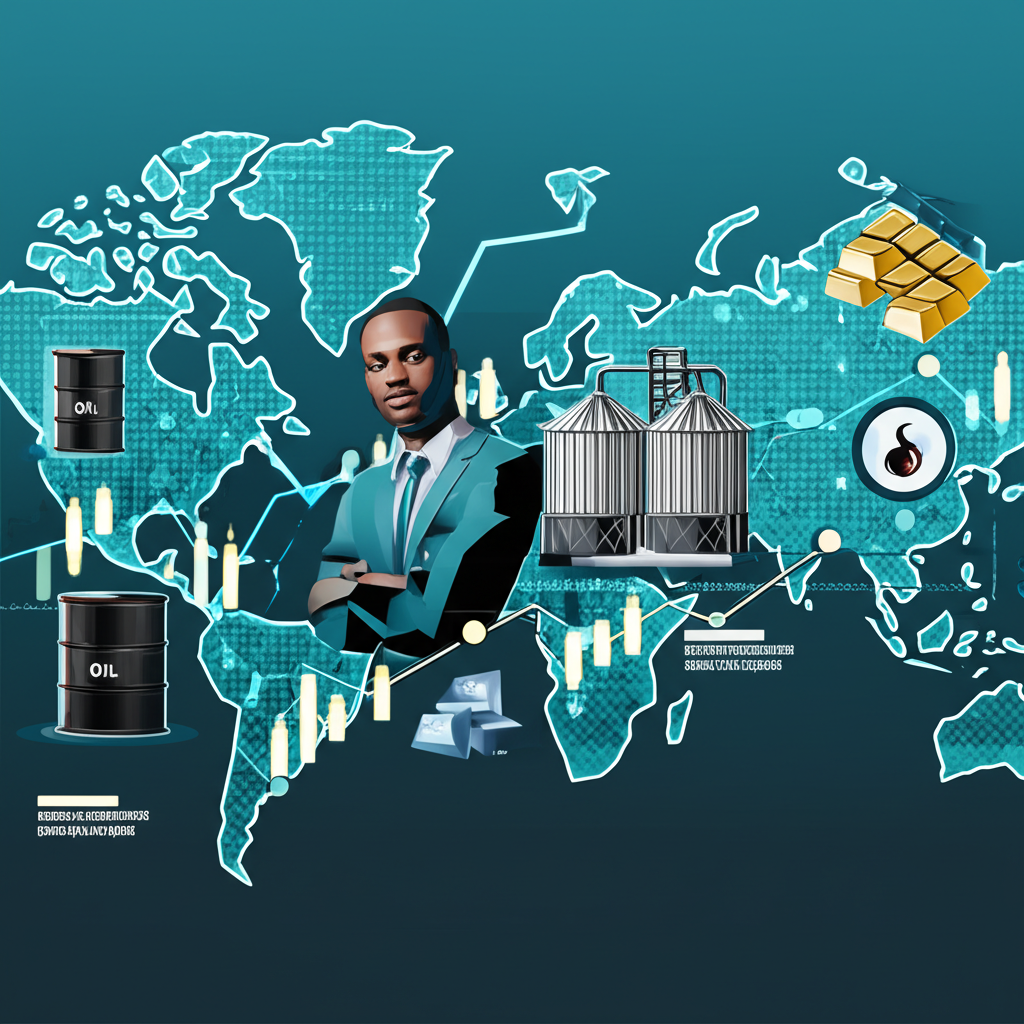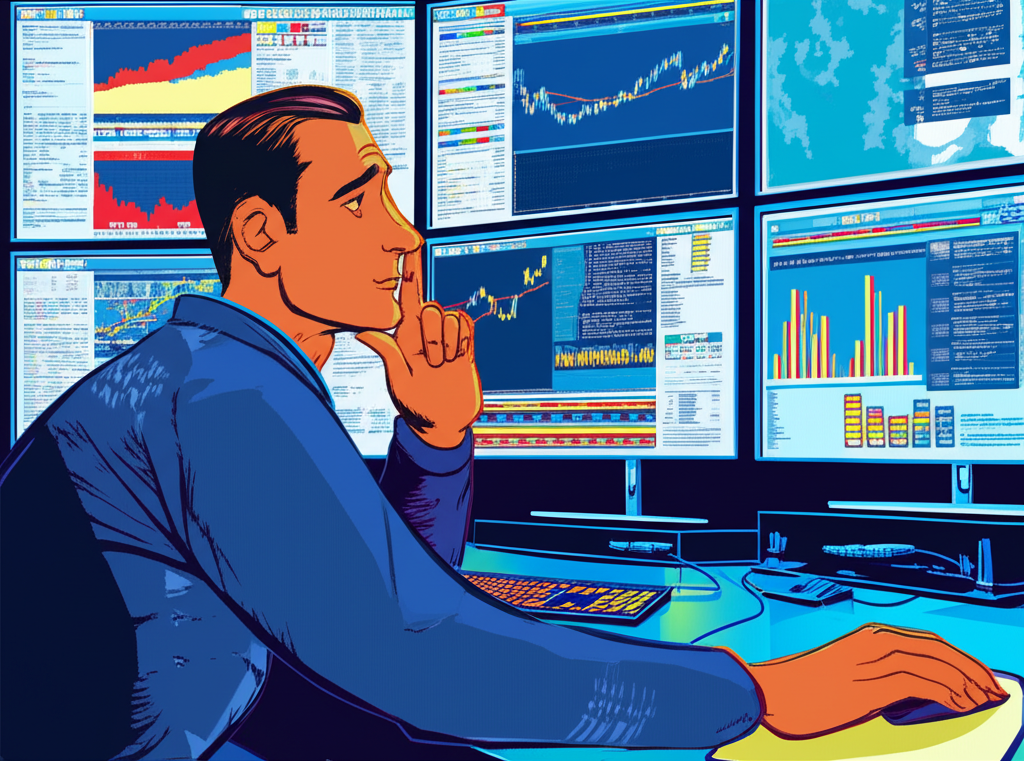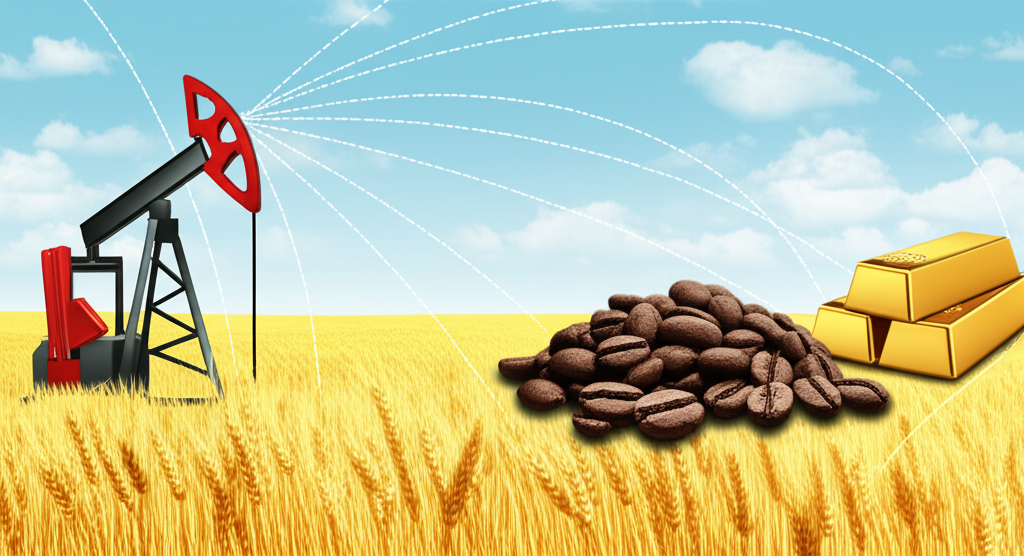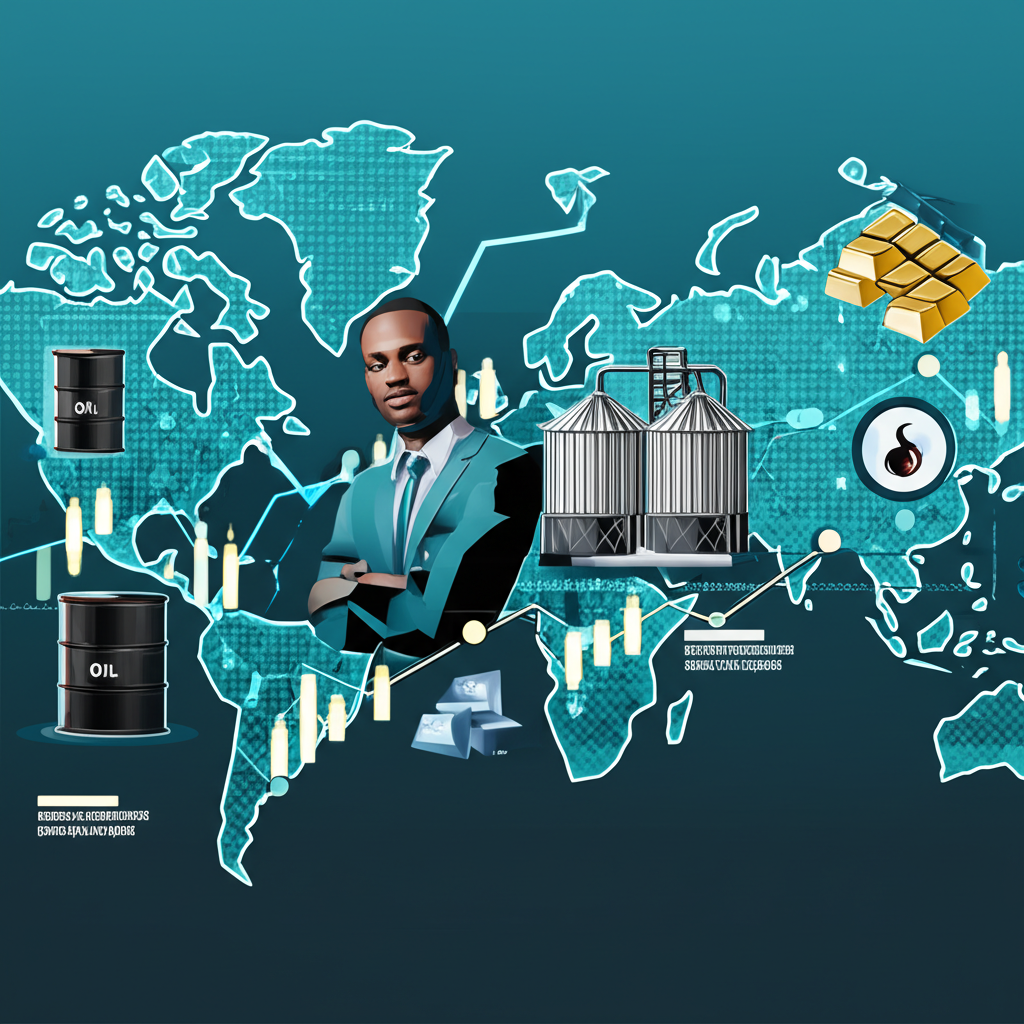Introduction: Understanding the Commodity Trader

The global economy thrives on commodities—raw materials that power industries, sustain populations, and form the backbone of modern civilization. Whether it’s crude oil fueling transportation, wheat feeding billions, or copper enabling digital infrastructure, these foundational resources are in constant motion across international markets. At the heart of this vast, interconnected system stands the commodity trader: a strategic player who interprets market signals, assesses risk, and executes trades that ripple across supply chains and economies. Unlike passive observers, commodity traders actively shape the flow of resources, influencing everything from national energy policies to everyday consumer prices. This article offers a detailed exploration of the commodity trader’s role, responsibilities, career trajectory, and the intense realities of a profession defined by volatility, speed, and high stakes.
What Exactly Does a Commodity Trader Do? Roles and Responsibilities

At its core, commodity trading is about capitalizing on price movements in raw materials. Success hinges on a trader’s ability to anticipate shifts in supply and demand, execute timely transactions, and manage exposure to unpredictable market swings. This isn’t just about placing buy or sell orders—it’s a multifaceted discipline that blends data analysis, strategic foresight, and disciplined execution.
Key responsibilities include:
* **Market Analysis:** Traders constantly monitor a wide array of factors—geopolitical tensions, weather disruptions, crop yields, production reports, currency fluctuations, and macroeconomic data—to forecast price trends. They rely on both technical analysis (chart patterns, momentum indicators) and fundamental analysis (supply inventories, consumption trends) to inform their decisions.
* **Risk Management:** Volatility is inherent in commodity markets. A sudden conflict in an oil-producing region or a drought in a major grain belt can trigger massive price swings. Traders mitigate these risks using hedging strategies, stop-loss mechanisms, position sizing, and portfolio diversification to protect capital and maintain long-term viability.
* **Trade Execution:** Whether working with futures contracts, options, swaps, or physical assets, traders must act swiftly and accurately. They use sophisticated trading platforms to enter and exit positions, often coordinating with brokers, counterparties, and logistics teams to ensure seamless transactions.
A typical day begins well before the opening bell, especially for those operating in global markets. Traders review overnight price movements, assess breaking news, and prepare for key economic releases. Much of the day is spent analyzing data streams, adjusting positions, and identifying new opportunities. Collaboration is essential—discussions with research analysts, risk managers, and sales teams help refine strategy. The environment is fast-paced, requiring constant vigilance and the ability to pivot quickly when market conditions shift.
Commonly traded commodities fall into three broad categories:
* **Energy:** Crude oil (WTI, Brent), natural gas, gasoline, heating oil, and increasingly, renewable energy derivatives.
* **Agriculture:** Grains (corn, wheat, soybeans), soft commodities (coffee, sugar, cocoa, cotton), and livestock (cattle, hogs).
* **Metals:** Precious metals (gold, silver, platinum) and industrial metals (copper, aluminum, nickel, zinc).
The Day-to-Day Life of a Commodity Trader

Life as a commodity trader is anything but routine. It’s a high-intensity profession where split-second decisions can mean the difference between profit and loss. Most traders begin their day in the early hours—often before 6:00 AM—to assess Asian and European market activity before domestic markets open. The trading floor, whether physical or virtual, is a hub of constant activity: screens flash with real-time data, news alerts pop up, and communication lines buzz with updates from brokers and colleagues.
Traders must remain mentally agile, processing vast amounts of information under pressure. A hurricane threatening Gulf Coast refineries, a labor strike at a copper mine, or a central bank policy shift can instantly alter market dynamics. The ability to stay calm, assess the situation, and act decisively is critical. This environment demands not just technical skill, but emotional control and resilience. The adrenaline can be exhilarating, but the psychological toll of sustained stress and financial exposure is significant. For those who thrive on challenge and intellectual rigor, however, the profession offers unparalleled engagement and a front-row seat to global economic forces.
Types of Commodity Traders: Diverse Roles in a Dynamic Market

The commodity trading ecosystem is diverse, with various roles tailored to different strategies, risk appetites, and market functions. Understanding these distinctions is essential for navigating career paths and grasping the full scope of the industry.
* **Proprietary Traders (Prop Traders):** These traders use a firm’s own capital to generate profits. They operate with significant autonomy and are directly accountable for their performance. Prop firms often reward top performers with substantial bonuses, but the pressure to deliver consistent returns is intense. Many traders begin their careers in prop environments, where the focus is purely on P&L.
* **Institutional Traders:** Employed by hedge funds, investment banks, pension funds, or asset managers, these professionals manage large pools of capital on behalf of clients or institutions. Their strategies may include long-term position building, portfolio diversification, or hedging against inflation. Institutional traders often work within stricter risk frameworks but have access to deeper research and broader market influence.
* **Physical Traders:** Unlike financial traders, physical traders deal with the actual movement of goods. They buy and sell tangible commodities—oil, grain, metals—and manage the logistics of storage, transportation, and delivery. These roles are common in commodity trading houses like Glencore, Cargill, or Vitol, where understanding supply chain dynamics, shipping routes, and regional infrastructure is as important as market analysis.
* **Financial Traders:** These traders focus on derivatives such as futures, options, and swaps. Their goal is to profit from price changes without handling physical goods. Financial trading dominates many exchanges and allows for greater leverage and flexibility, but it also requires deep knowledge of contract specifications, margin requirements, and settlement mechanics.
Commodity Trader vs. Commodity Broker: What’s the Difference?
A frequent source of confusion lies in distinguishing between commodity traders and brokers. While both operate in the same markets, their functions, incentives, and risk profiles are fundamentally different.
A **commodity broker** serves as an intermediary, executing trades on behalf of clients. They provide access to exchanges, offer market commentary, and ensure accurate order fulfillment. Brokers do not take market positions themselves and are not exposed to price risk. Their income comes primarily from commissions and service fees. Their success is measured by client satisfaction and transaction efficiency.
A **commodity trader**, by contrast, takes active positions in the market, using capital to speculate on price movements or hedge exposures. Whether trading for a firm or managing a personal book, traders bear direct financial risk. Their performance is evaluated by their profit and loss (P&L), and their compensation is heavily tied to results.
Here’s a clear breakdown of the differences:
| Feature | Commodity Trader | Commodity Broker |
| :—————- | :————————————————- | :—————————————————— |
| **Capital Used** | Own capital or firm’s capital | Client’s capital |
| **Objective** | Profit from market movements (speculation/hedging) | Execute client orders; provide market access/research |
| **Risk Exposure** | Direct market risk; responsible for P&L | Minimal direct market risk; responsible for accurate execution |
| **Client Role** | May have clients (institutional), but also trade prop | Serves clients; acts as an intermediary |
| **Compensation** | Salary + significant performance-based bonuses | Commission-based, sometimes salary + bonus |
| **Focus** | Market analysis, strategy, risk management, position taking | Client service, order execution, market information relay |
Essential Skills and Qualifications for Aspiring Commodity Traders
Breaking into commodity trading requires more than just a strong academic record—it demands a specific mindset and a toolkit of practical abilities. The best traders combine intellectual rigor with emotional discipline, technical proficiency with real-world intuition.
**Core Competencies:**
* **Analytical Thinking:** The ability to interpret complex datasets, identify trends, and draw meaningful conclusions is non-negotiable. This includes both quantitative analysis—such as statistical modeling and scenario forecasting—and qualitative judgment, like assessing the impact of political instability on oil flows.
* **Risk Management Acumen:** Understanding how to quantify exposure, set position limits, and use hedging instruments is central to survival in volatile markets. Traders must balance aggression with prudence, knowing when to take a position and when to step back.
* **Numerical Fluency:** Strong math and financial modeling skills are essential for pricing instruments, calculating margins, and assessing portfolio risk. Comfort with spreadsheets, algorithms, and trading software is a baseline requirement.
* **Decisiveness Under Pressure:** Markets move quickly. Traders must make informed decisions in real time, often with incomplete information. Hesitation can be costly.
* **Communication and Negotiation:** Whether discussing strategy with a team, negotiating a physical deal with a supplier, or explaining a trade rationale to a supervisor, clear and confident communication is vital.
* **Emotional Resilience:** The psychological demands are immense. Traders face constant pressure, potential for significant losses, and the need to stay disciplined after both wins and setbacks. The ability to manage stress and maintain focus is a key differentiator.
* **Market-Specific Knowledge:** Deep familiarity with the commodities being traded—be it the planting cycle of soybeans, the refining margins of crude oil, or the industrial demand for copper—is crucial for making informed decisions.
**Educational Backgrounds:** While no single degree guarantees success, most traders hold bachelor’s or advanced degrees in finance, economics, mathematics, engineering, or data science. A strong GPA, particularly in quantitative courses, signals analytical capability. Many top trading firms prioritize candidates with demonstrated problem-solving skills, regardless of their specific major.
Certifications and Further Education
While not always required, certain credentials can significantly enhance a candidate’s credibility and open doors to advanced roles.
* **Series 3 License (National Commodity Futures Examination):** Mandatory for individuals who solicit or accept orders for futures and options contracts in the U.S. It covers market structure, trading regulations, and risk disclosure.
* **CFA (Chartered Financial Analyst) Program:** Though broader in scope, the CFA curriculum provides a solid foundation in asset valuation, portfolio management, and ethical standards—skills highly transferable to commodity trading.
* **Master’s in Finance or MBA:** These degrees offer specialized training in financial modeling, derivatives, and risk management. They also provide networking opportunities with industry professionals and access to elite recruitment pipelines.
How to Become a Commodity Trader: Your Career Path
Entering the world of commodity trading is a competitive and structured journey. Most successful traders follow a similar trajectory, building experience and credibility over time.
1. **Education:** Begin with a strong undergraduate degree in a quantitative or analytical field. Maintain a high GPA and seek out relevant coursework in economics, statistics, or financial markets.
2. **Internships:** Gain hands-on experience through internships at trading firms, banks, or commodity houses. These roles provide exposure to real market environments, mentorship, and a foot in the door.
3. **Entry-Level Roles:** Start as a trading assistant, research analyst, or junior trader. These positions focus on data collection, market monitoring, and supporting senior traders, allowing newcomers to absorb knowledge and develop skills.
4. **Networking:** The trading community is tight-knit. Attend industry conferences, join professional associations, and connect with professionals on LinkedIn. Many opportunities arise through personal referrals and mentorship.
5. **Continuous Development:** Markets evolve rapidly. Stay current with global trends, technological advancements, and regulatory changes. Read market reports, follow commodity news, and invest time in learning new analytical tools.
6. **Prove Performance:** Advancement often depends on demonstrated trading results. Many firms use simulated trading or small capital allocations to evaluate a candidate’s ability to generate consistent returns. Only those who show discipline, risk awareness, and profitability typically move into full trading roles.
Salary and Career Outlook for Commodity Traders
Compensation in commodity trading reflects the high level of responsibility and performance pressure. Pay structures are typically a mix of base salary and performance-based bonuses, with top earners seeing substantial rewards.
**Compensation Overview:**
Entry-level traders can expect base salaries between $60,000 and $100,000. Bonuses, often tied to individual and team performance, can add tens of thousands more. Mid-career traders with a proven track record may earn base salaries of $150,000 to $300,000, with total compensation frequently exceeding $500,000 when bonuses are included. Senior traders or desk heads managing large portfolios can earn several million dollars annually, particularly in proprietary or hedge fund environments.
According to data from Salary.com, the median annual salary for a commodity trader in the U.S. was around $150,000 in late 2023, with the top 10% earning over $250,000 before bonuses.
| Experience Level | Base Salary Range (USD) | Potential Bonus (USD) | Total Compensation (USD) |
| :————— | :———————- | :——————– | :———————– |
| Entry-Level | $60,000 – $100,000 | $20,000 – $80,000 | $80,000 – $180,000 |
| Mid-Career | $150,000 – $300,000 | $100,000 – $500,000 | $250,000 – $800,000 |
| Senior/Lead | $300,000+ | $200,000 – $1,000,000+ | $500,000 – Multi-millions |
**Career Progression:** The typical path moves from analyst to junior trader, then to a full trading role, senior trader, and eventually portfolio manager or head of trading. Some transition into risk management, research, or fund leadership. Others leverage their experience to launch proprietary trading firms or consultancies.
**Industry Trends:** The future of commodity trading is being reshaped by technology, sustainability, and global uncertainty. Algorithmic and high-frequency trading are gaining ground, requiring traders to understand coding and data science. Environmental, social, and governance (ESG) factors are influencing investment decisions, with growing interest in carbon credits, green metals, and sustainable agriculture. Geopolitical tensions and climate change continue to drive volatility, creating both risks and opportunities. Traders who combine traditional market knowledge with adaptability and technical fluency will be best positioned for long-term success.
Risks and Rewards: The High-Stakes World of Commodity Trading
The allure of commodity trading often centers on its financial upside—but the reality is far more complex. It’s a profession defined by extremes: immense rewards balanced by intense pressure and significant personal cost.
**The Rewards:**
* **Financial Upside:** Top performers earn compensation that rivals or exceeds many other fields. The direct link between performance and pay makes it one of the most meritocratic careers in finance.
* **Intellectual Challenge:** The job demands constant learning, pattern recognition, and strategic thinking. Traders must synthesize global events, economic data, and market sentiment into actionable insights.
* **Global Impact:** By allocating capital and managing risk, traders influence how resources are distributed worldwide. Their decisions affect producers, consumers, and entire economies.
* **Dynamic Environment:** For individuals who thrive on challenge and unpredictability, the fast pace and high stakes offer a level of engagement that few careers can match.
**The Risks:**
* **Market Volatility:** Prices can swing dramatically due to unforeseen events—a war, a natural disaster, a policy shift—erasing gains in minutes.
* **Financial Exposure:** Traders are directly accountable for losses. Poor decisions can lead to financial damage for the firm and career consequences for the individual.
* **Mental and Emotional Strain:** The pressure to perform, the fear of loss, and the need for constant vigilance contribute to high stress levels. Burnout is a real concern.
* **Long and Unpredictable Hours:** Trading doesn’t stop at 5 PM. Global markets operate across time zones, and critical events often occur outside standard business hours.
* **Work-Life Imbalance:** The demands of the job can overshadow personal time, relationships, and health, especially during periods of market turbulence.
* **Psychological Discipline:** Maintaining objectivity after a losing streak or avoiding overconfidence after a winning streak is a constant battle. Emotional control is as important as analytical skill.
Success in this field requires more than intelligence—it demands resilience, self-awareness, and a deep understanding of one’s own risk tolerance.
Conclusion: Is Commodity Trading the Right Path for You?
Commodity trading sits at the crossroads of global economics, geopolitics, and financial innovation. It’s a career that rewards sharp analysis, disciplined execution, and the courage to act decisively in uncertain environments. The financial incentives are substantial, but they come with significant personal and professional demands.
For those who are energized by fast-paced decision-making, fascinated by global markets, and capable of managing both risk and emotion, commodity trading can be deeply fulfilling. It offers a rare opportunity to engage directly with the forces that shape the modern world. Yet, it’s not a path for everyone. Aspiring traders must be honest about their ability to handle pressure, their appetite for risk, and their commitment to lifelong learning. Those who possess the right mix of skills, temperament, and drive will find a challenging yet rewarding journey ahead.
Frequently Asked Questions (FAQs)
1. What is the typical starting salary for a commodity trader?
Typical starting salaries for junior commodity traders in the U.S. can range from $60,000 to $100,000 annually. However, this base salary is often supplemented by performance-based bonuses, which can add significant amounts, often $20,000 to $80,000 or more, bringing total compensation higher.
2. What educational background is most beneficial for becoming a commodity trader?
While there’s no single mandatory degree, backgrounds in finance, economics, mathematics, statistics, engineering, or other quantitative fields are highly beneficial. A strong academic record, especially in analytical subjects, is often preferred by hiring firms. Advanced degrees like a Master’s in Finance or an MBA can also provide an edge.
3. How does a commodity trader manage risk in volatile markets?
Commodity traders manage risk through various strategies, including:
- **Hedging:** Using financial instruments (like futures or options) to offset potential losses from adverse price movements in their primary positions.
- **Stop-Loss Orders:** Automatically closing a position if it reaches a predefined loss level.
- **Diversification:** Spreading investments across different commodities or markets to reduce exposure to any single asset’s volatility.
- **Position Sizing:** Carefully controlling the size of trades relative to their capital to limit potential losses.
- **Thorough Analysis:** Continuously analyzing market fundamentals and technical indicators to make informed decisions and anticipate risks.
4. Are there different types of commodities that traders specialize in?
Yes, traders often specialize in specific commodity sectors due to the unique market dynamics of each:
- **Energy:** Crude oil, natural gas, refined products.
- **Agriculture (Softs & Grains):** Wheat, corn, soybeans, coffee, sugar, cotton.
- **Metals:** Precious metals (gold, silver), base metals (copper, aluminum).
Specialization allows traders to develop deep expertise in the factors (e.g., weather, geopolitical events, industrial demand) that specifically impact their chosen market.
5. What are the key differences between a commodity trader and a stock trader?
While both trade financial assets, key differences include:
- **Underlying Assets:** Commodity traders deal with raw materials (oil, gold, corn), often via futures/options. Stock traders deal with company shares.
- **Market Drivers:** Commodity prices are heavily influenced by supply/demand fundamentals, weather, geopolitics, and production costs. Stock prices are driven by company earnings, industry trends, and investor sentiment.
- **Volatility:** Commodity markets can often be more volatile due to external, unpredictable factors.
- **Physical Delivery:** While most commodity trades are financial, the potential for physical delivery exists, which is not a factor in stock trading.
6. How important is networking for a career in commodity trading?
Networking is extremely important. The commodity trading industry is often relationship-driven. Connections can lead to internship opportunities, entry-level jobs, mentorship, and invaluable insights into market trends and firm cultures. Attending industry events, joining professional organizations, and leveraging platforms like LinkedIn are crucial for building a professional network.
7. What kind of hours do commodity traders typically work?
Commodity traders often work long and demanding hours. Days usually start very early (e.g., 5:00 AM or 6:00 AM) to monitor overnight market movements and prepare for the market open. Depending on the commodities traded and global market hours, they may work late into the evening. The nature of the job often requires constant attention during market hours, and sometimes even outside of them, especially during periods of high volatility or significant news events.
8. Can you become a commodity trader without a finance degree?
Yes, it is possible. While a finance degree is common, many successful traders come from backgrounds in economics, mathematics, engineering, computer science, or even highly analytical liberal arts fields. What’s most important is a strong aptitude for quantitative analysis, critical thinking, risk management, and a deep understanding of market dynamics, regardless of the specific degree. Relevant internships and certifications can also help bridge any gaps.
9. What are the biggest challenges faced by commodity traders?
Some of the biggest challenges include:
- **Extreme Market Volatility:** Unpredictable price swings can lead to rapid, substantial losses.
- **High Stress and Pressure:** The constant need for quick decisions and the financial stakes involved create an intensely stressful environment.
- **Long Hours and Work-Life Balance:** The demands of global markets often necessitate extended workdays and can impact personal life.
- **Continuous Learning:** Markets and technologies evolve rapidly, requiring traders to constantly update their knowledge and skills.
- **Psychological Demands:** Maintaining emotional discipline and resilience through wins and losses is crucial but difficult.
10. What is the long-term career outlook for commodity traders?
The long-term career outlook for skilled commodity traders remains positive, though the role is evolving. The demand for raw materials will always exist, driving the need for market participants. The growth of algorithmic trading and data analytics means that traders with strong quantitative and technological skills will be particularly sought after. Those who can adapt to new market structures, integrate ESG considerations, and navigate increasing geopolitical complexities will find sustained opportunities for advancement in roles such as senior trader, portfolio manager, or head of a trading desk. The U.S. Bureau of Labor Statistics projects employment for financial analysts, a related field, to grow faster than the average for all occupations.

留言